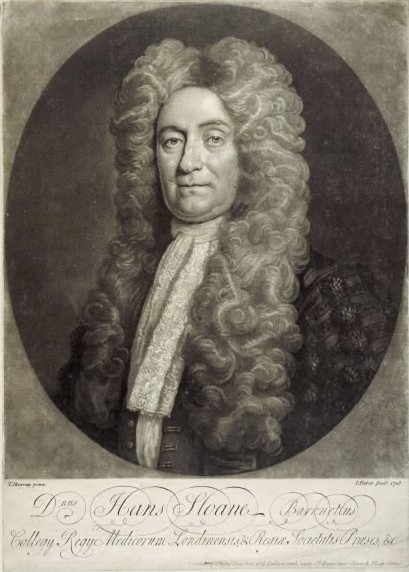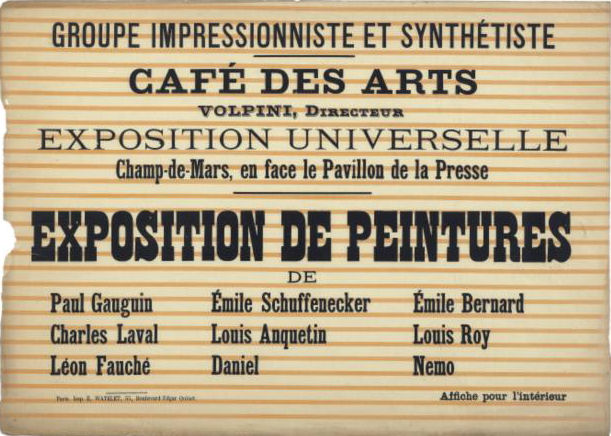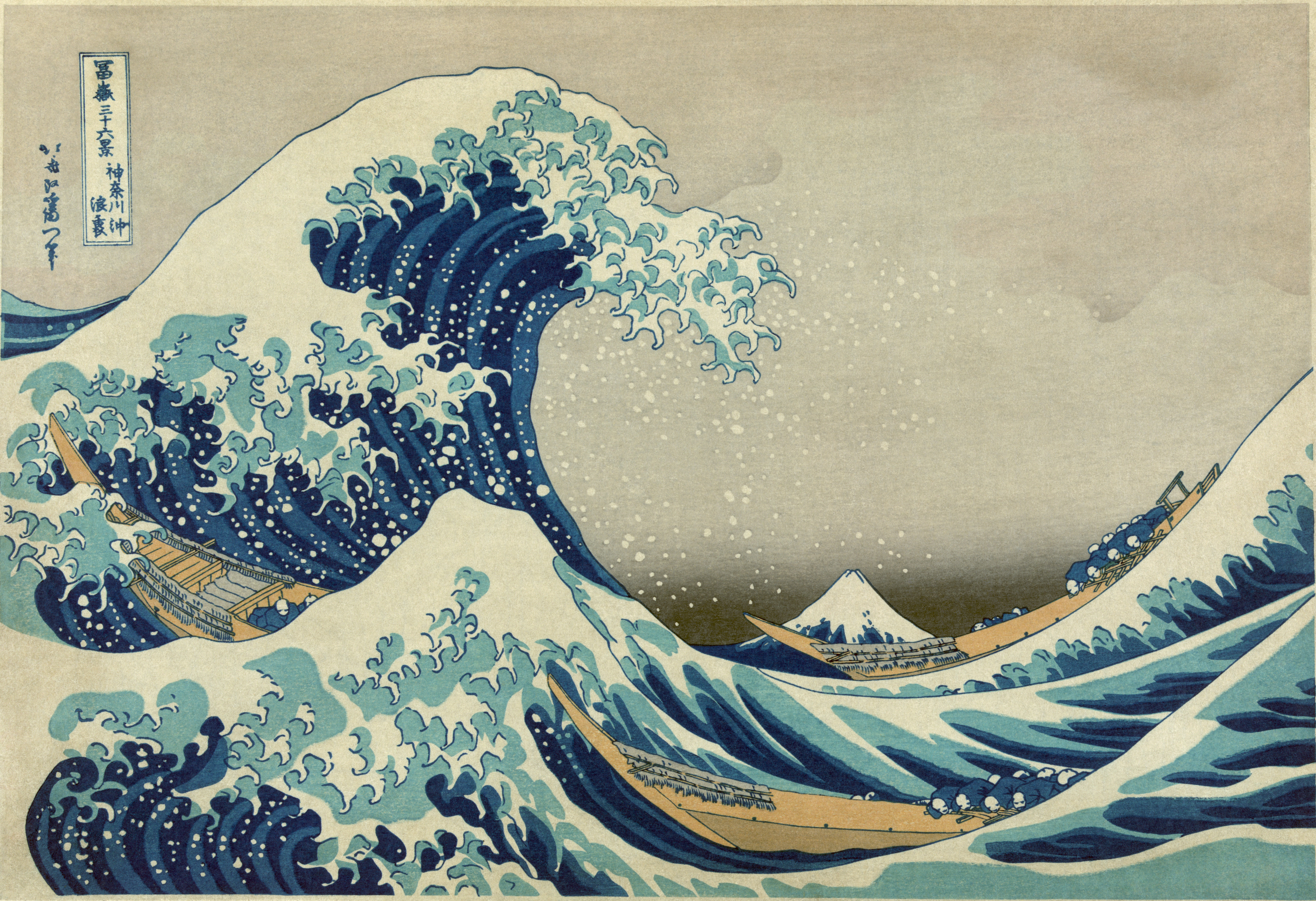|
Red Fuji
, also known as ''Red Fuji'', is a woodblock print by Japanese artist Hokusai (1760–1849), part of his '' Thirty-six Views of Mount Fuji'' series, dating from to 1832. The work has been described as "one of the simplest and at the same time one of the most outstanding of all Japanese prints". Description In early autumn when, as the title specifies, the wind is southerly and the sky is clear, the rising sun can turn Mount Fuji red. Hokusai captures this moment with compositional abstraction but meteorological specificity, especially when compared to the rest of the series. The three shades of deepening blue of the sky mirror the three hues of the mountain. The lingering remnants of snow at the peak of the mountain and dark shadows encompassing the forest at its base place it very precisely in time. Mount Fuji's solidly symmetrical shape on the right half of the image is balanced by the delicate clouds to the left, for a striking composition. There is however no specific locat ... [...More Info...] [...Related Items...] OR: [Wikipedia] [Google] [Baidu] |
Hokusai
, known simply as Hokusai, was a Japanese ukiyo-e artist of the Edo period, active as a painter and printmaker. He is best known for the woodblock printing in Japan, woodblock print series ''Thirty-Six Views of Mount Fuji'', which includes the iconic print ''The Great Wave off Kanagawa''. Hokusai was instrumental in developing ''ukiyo-e'' from a style of portraiture largely focused on courtesans and actors into a much broader style of art that focused on landscapes, plants, and animals. Hokusai created the monumental ''Thirty-Six Views of Mount Fuji'' as a response to a domestic travel boom in Japan and as part of a personal interest in Mount Fuji. It was this series, specifically, ''The Great Wave off Kanagawa'' and ''Fine Wind, Clear Morning'', that secured his fame both in Japan and overseas. Hokusai was best known for his woodblock ukiyo-e prints, but he worked in a variety of mediums including painting and book illustration. Starting as a young child, he continued workin ... [...More Info...] [...Related Items...] OR: [Wikipedia] [Google] [Baidu] |
The Great Wave Off Kanagawa
is a woodblock print by Japanese ''ukiyo-e'' artist Hokusai, created in late 1831 during the Edo period of Japanese history. The print depicts three boats moving through a storm-tossed sea, with a large wave forming a spiral in the centre and Mount Fuji visible in the background. The print is Hokusai's best-known work and the first in his series ''Thirty-six Views of Mount Fuji'', in which the use of Prussian blue revolutionized Japanese prints. The composition of ''The Great Wave'' is a synthesis of traditional Japanese prints and use of Perspective (graphical), graphical perspective developed in Europe, and earned him immediate success in Japan and later in Europe, where Hokusai's art inspired works by the Impressionism, Impressionists. Several museums throughout the world hold copies of ''The Great Wave'', many of which came from 19th-century private collections of Japanese prints. ''The Great Wave Kanagawa'' has been described as "possibly the most reproduced image in ... [...More Info...] [...Related Items...] OR: [Wikipedia] [Google] [Baidu] |
The British Museum
The British Museum is a public museum dedicated to human history, art and culture located in the Bloomsbury area of London. Its permanent collection of eight million works is among the largest and most comprehensive in existence. It documents the story of human culture from its beginnings to the present.Among the national museums in London, sculpture and decorative and applied art are in the Victoria and Albert Museum; the British Museum houses earlier art, non-Western art, prints and drawings. The National Gallery holds the national collection of Western European art to about 1900, while art of the 20th century on is at Tate Modern. Tate Britain holds British Art from 1500 onwards. Books, manuscripts and many works on paper are in the British Library. There are significant overlaps between the coverage of the various collections. The British Museum was the first public national museum to cover all fields of knowledge. The museum was established in 1753, largely based on ... [...More Info...] [...Related Items...] OR: [Wikipedia] [Google] [Baidu] |
British Museum
The British Museum is a public museum dedicated to human history, art and culture located in the Bloomsbury area of London. Its permanent collection of eight million works is among the largest and most comprehensive in existence. It documents the story of human culture from its beginnings to the present.Among the national museums in London, sculpture and decorative and applied art are in the Victoria and Albert Museum; the British Museum houses earlier art, non-Western art, prints and drawings. The National Gallery holds the national collection of Western European art to about 1900, while art of the 20th century on is at Tate Modern. Tate Britain holds British Art from 1500 onwards. Books, manuscripts and many works on paper are in the British Library. There are significant overlaps between the coverage of the various collections. The British Museum was the first public national museum to cover all fields of knowledge. The museum was established in 1753, largely b ... [...More Info...] [...Related Items...] OR: [Wikipedia] [Google] [Baidu] |
Indianapolis Museum Of Art
The Indianapolis Museum of Art (IMA) is an encyclopedic art museum located at Newfields, a campus that also houses Lilly House, The Virginia B. Fairbanks Art & Nature Park: 100 Acres, the Gardens at Newfields, the Beer Garden, and more. It is located at the corner of North Michigan Road and West 38th Street, about three miles north of downtown Indianapolis, northwest of Crown Hill Cemetery. There are exhibitions, classes, tours, and events, many of which change seasonally. The entire campus and organization was previously referred to as the Indianapolis Museum of Art, but in 2017 the campus and organization were renamed "Newfields" to better reflect the breadth of offerings and venues. The "Indianapolis Museum of Art" now specifically refers to the main art museum building that acts as the cornerstone of the campus, as well as the legal name of the organization doing business as Newfields. The Indianapolis Museum of Art is the ninth oldest and eighth largest encyclopedic art ... [...More Info...] [...Related Items...] OR: [Wikipedia] [Google] [Baidu] |
Post-impressionist
Post-Impressionism (also spelled Postimpressionism) was a predominantly French art movement that developed roughly between 1886 and 1905, from the last Impressionist exhibition to the birth of Fauvism. Post-Impressionism emerged as a reaction against Impressionists' concern for the naturalistic depiction of light and colour. Its broad emphasis on abstract qualities or symbolic content means Post-Impressionism encompasses Les Nabis, Neo-Impressionism, Symbolism, Cloisonnism, the Pont-Aven School, and Synthetism, along with some later Impressionists' work. The movement's principal artists were Paul Cézanne (known as the father of Post-Impressionism), Paul Gauguin, Vincent van Gogh and Georges Seurat. The term Post-Impressionism was first used by art critic Roger Fry in 1906.Peter Morrin, Judith Zilczer, William C. Agee, ''The Advent of Modernism. Post-Impressionism and North American Art, 1900-1918'', High Museum of Art, 1986 Critic Frank Rutter in a review of the Salon d'Automne ... [...More Info...] [...Related Items...] OR: [Wikipedia] [Google] [Baidu] |
Impressionist
Impressionism was a 19th-century art movement characterized by relatively small, thin, yet visible brush strokes, open composition, emphasis on accurate depiction of light in its changing qualities (often accentuating the effects of the passage of time), ordinary subject matter, unusual visual angles, and inclusion of movement as a crucial element of human perception and experience. Impressionism originated with a group of Paris-based artists whose independent exhibitions brought them to prominence during the 1870s and 1880s. The Impressionists faced harsh opposition from the conventional art community in France. The name of the style derives from the title of a Claude Monet work, ''Impression, soleil levant'' (''Impression, Sunrise''), which provoked the critic Louis Leroy to coin the term in a satirical review published in the Parisian newspaper ''Le Charivari''. The development of Impressionism in the visual arts was soon followed by analogous styles in other media that beca ... [...More Info...] [...Related Items...] OR: [Wikipedia] [Google] [Baidu] |
Ukiyo-e
Ukiyo-e is a genre of Japanese art which flourished from the 17th through 19th centuries. Its artists produced woodblock prints and paintings Painting is the practice of applying paint, pigment, color or other medium to a solid surface (called the "matrix" or "support"). The medium is commonly applied to the base with a brush, but other implements, such as knives, sponges, and ai ... of such subjects as female beauties; kabuki actors and sumo wrestlers; scenes from history and folk tales; travel scenes and landscapes; Flora of Japan, flora and Wildlife of Japan#Fauna, fauna; and Shunga, erotica. The term translates as "picture[s] of the floating world". In 1603, the city of Edo (Tokyo) became the seat of the ruling Tokugawa shogunate. The ''chōnin'' class (merchants, craftsmen and workers), positioned at the bottom of Four occupations, the social order, benefited the most from the city's rapid economic growth, and began to indulge in and patronise the entertainment o ... [...More Info...] [...Related Items...] OR: [Wikipedia] [Google] [Baidu] |
Prussian Blue
Prussian blue (also known as Berlin blue, Brandenburg blue or, in painting, Parisian or Paris blue) is a dark blue pigment produced by oxidation of ferrous ferrocyanide salts. It has the chemical formula Fe CN)">Cyanide.html" ;"title="e(Cyanide">CN) Turnbull's blue is chemically identical, but is made from different reagents, and its slightly different color stems from different impurities and particle sizes. Prussian blue was the first modern synthetic pigment. It is prepared as a very fine colloidal dispersion, because the compound is not soluble in water. It contains variable amounts of other ions and its appearance depends sensitively on the size of the colloidal particles. The pigment is used in paints, and it is the traditional "blue" in blueprints, and became prominent in 19th-century () Japanese woodblock prints. In medicine, orally administered Prussian blue is used as an antidote for certain kinds of heavy metal poisoning, e.g., by thallium(I) and radioactive is ... [...More Info...] [...Related Items...] OR: [Wikipedia] [Google] [Baidu] |
Ukiyo-e
Ukiyo-e is a genre of Japanese art which flourished from the 17th through 19th centuries. Its artists produced woodblock prints and paintings Painting is the practice of applying paint, pigment, color or other medium to a solid surface (called the "matrix" or "support"). The medium is commonly applied to the base with a brush, but other implements, such as knives, sponges, and ai ... of such subjects as female beauties; kabuki actors and sumo wrestlers; scenes from history and folk tales; travel scenes and landscapes; Flora of Japan, flora and Wildlife of Japan#Fauna, fauna; and Shunga, erotica. The term translates as "picture[s] of the floating world". In 1603, the city of Edo (Tokyo) became the seat of the ruling Tokugawa shogunate. The ''chōnin'' class (merchants, craftsmen and workers), positioned at the bottom of Four occupations, the social order, benefited the most from the city's rapid economic growth, and began to indulge in and patronise the entertainment o ... [...More Info...] [...Related Items...] OR: [Wikipedia] [Google] [Baidu] |
Clear Sky (alternate Version) -- Hokusai
''S.T.A.L.K.E.R.: Clear Sky'' is a 2008 first-person shooter survival horror video game with role-playing elements. It was developed by GSC Game World and published by Deep Silver as a prequel to '' S.T.A.L.K.E.R.: Shadow of Chernobyl''. The player assumes the identity of Scar, a mercenary tasked with stopping a group of Stalkers from reaching the center of the Zone, a forbidden territory surrounding the Chernobyl Nuclear Power Plant. The game uses much of the same regions as ''Shadow of Chernobyl'', while introducing several new areas such as the abandoned town of Limansk. ''S.T.A.L.K.E.R.: Clear Sky'' introduces features to the series, including the ability to customize weapon and armor, as well as participate in faction wars. A third game, '' S.T.A.L.K.E.R.: Call of Pripyat'' was released in 2009 as a sequel to ''Shadow of Chernobyl''. Gameplay This game combines elements of first-person shooters ("twitch-based" aiming, with a first-person perspective), survival horror (a ... [...More Info...] [...Related Items...] OR: [Wikipedia] [Google] [Baidu] |
Pink Fuji -- Hokusai
Pink is the color of a namesake flower that is a pale tint of red. It was first used as a color name in the late 17th century. According to surveys in Europe and the United States, pink is the color most often associated with charm, politeness, sensitivity, tenderness, sweetness, childhood, femininity, and romance. A combination of pink and white is associated with chastity and innocence, whereas a combination of pink and black links to eroticism and seduction. In the 21st century, pink is seen as a symbol of femininity, though this has not always been true; in the 1920s, pink was seen as a color that reflected masculinity. In nature and culture File:Color icon pink v2.svg, Various shades of pink File:Dianthus.jpg, The color pink takes its name from the flowers called pinks, members of the genus ''Dianthus''. File:Rosa Queen Elizabeth1ZIXIETTE.jpg, In most European languages, pink is called ''rose'' or ''rosa'', after the rose flower. File:Cherry blossoms in the Ts ... [...More Info...] [...Related Items...] OR: [Wikipedia] [Google] [Baidu] |










